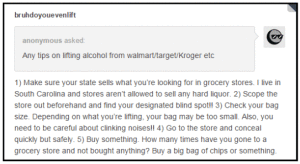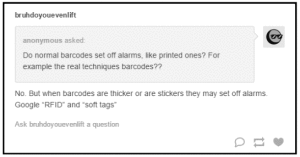 For me, this is the last week of the 3rd quarter. It’s already that time of year once again. In just a few short days, the 4th quarter will ramp-up and shoppers will be in a tizzy as they check their loved ones off that holiday wish list. I just read a national report that predicts consumer spending this season will be at its highest point since 2008. That’s fantastic news to us retailers. We are poised to post some record sales in the next three months, provided that we execute to our fullest potential. What keeps the customer coming into your store? Is it your customer service levels?
For me, this is the last week of the 3rd quarter. It’s already that time of year once again. In just a few short days, the 4th quarter will ramp-up and shoppers will be in a tizzy as they check their loved ones off that holiday wish list. I just read a national report that predicts consumer spending this season will be at its highest point since 2008. That’s fantastic news to us retailers. We are poised to post some record sales in the next three months, provided that we execute to our fullest potential. What keeps the customer coming into your store? Is it your customer service levels?
I am a champion of customer service. Like many before me, prior to my LP career I was a store manager for a big box retailer. You can set all the POGs, put up all the proper signage and all those other corporate tasks, but you will find yourself on a lonely island if your store is not customer centric. It’s a two way street. Attentive and responsive employees will help drive sales. They will also reduce shrink.
Take for example a customer shopping for a treadmill. Sure, they could come into the store, pick out the item themselves and cart it out. You just made a $500 sale and you really didn’t have to work for it. Did that customer get the foam mat to protect their floor? What about the silicone lubricant for the belt? How about a new pair of running shoes to prevent an injury, or even some fitness supplements to help them with their workout routine? What if by not speaking with someone on your staff, they purchase a treadmill that doesn’t fit their activity level? You may have very well left an additional $50-$100 on the table in add-on sales. Why would you leave all these extra dollars out there?
My company, like so many others, runs a survey. Customers can call in the number on the back of the receipt and share their in store experiences. I often review these for opportunities in the store. One thing I see the most is that customers feel “ignored”. Is it so hard for our employees to simply greet a customer? I see it so often. Employees who are too task oriented, who whizz past our customers without as much as a greeting. Do you see that in your store? Is it acceptable?
Let’s talk shrink. This is an LP centered magazine, right? Do you know that the very best method for reducing shoplifting losses is? If you guessed customer service, give yourself a pat on the back. First and foremost, a thief never wants to be acknowledged. If your employees are engaging and monitoring their areas, a thief will not have the opportunity to steal your merchandise. When my LP team completes a shoplifting report, there is a checkbox at the end of the report. It asks simply if the suspect was ever provided customer service by an employee. When I get those reports that say “no,” I use that shoplifting incident as a tool to coach the managers of the store, and show them a customer service failure. By training your employees to give high levels of customer service, you can and will deter criminal activity.
Customer service isn’t just telling a customer hello. It’s about each and every employee going the extra mile to satisfy your customer. Every single person that comes through your doors has a choice. They are choosing to give you their money. You, as a manager, should be honored by that choice. You should make it a core philosophy in your building that the customer is the most important aspect of your business. Strive to be the store that people will shop at, no matter the distance from their home. Engage your customers, leave no money on the table and be proactive in reducing shoplifting losses. Remember, customer service means money in your pocket and less product walking out the doors.






 eir knowledge to others who may be new to the game. Much like a tenured LP manager taking a green agent under their wings.
eir knowledge to others who may be new to the game. Much like a tenured LP manager taking a green agent under their wings.



